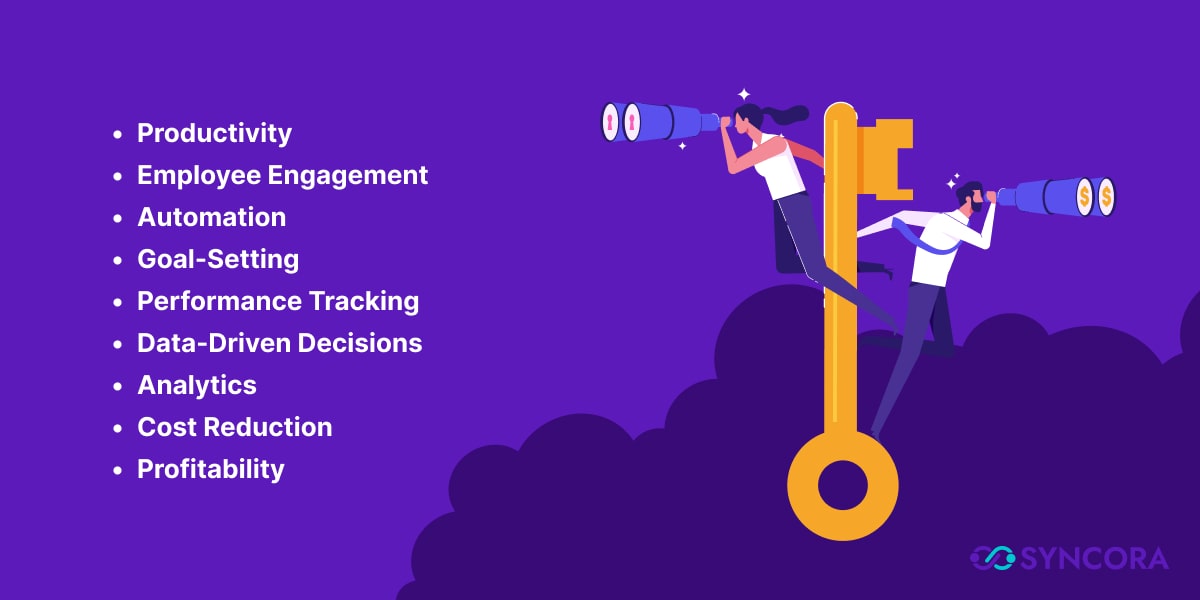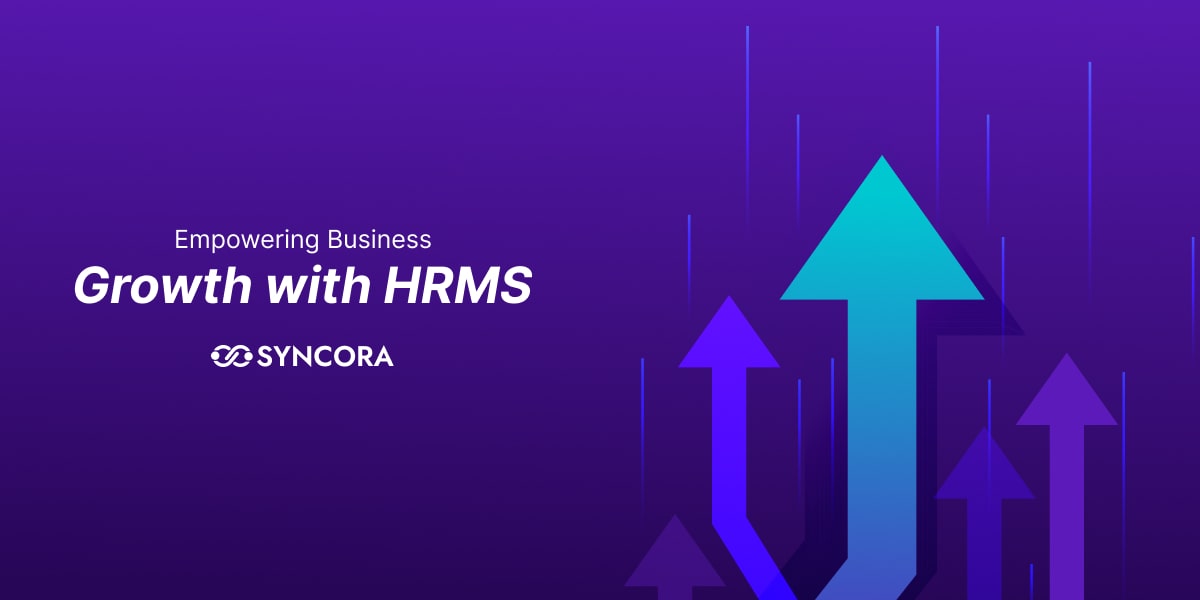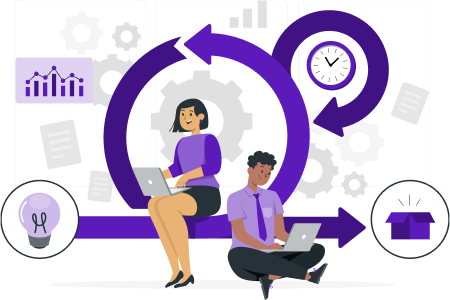Do you try to manage your team with the aim to boost productivity while cutting expenses? Sometimes, that’s easier said than done.
Businesses abroad find it challenging to optimize workflows while also managing resources efficiently. With numerous operations to supervise, maintaining productivity while keeping expenses low becomes overwhelming.
So what’s the solution?
User-friendly, scalable HRM software in Australia is the one-stop solution.
It’s no surprise that a company’s success, the quality of its workforce, and the mindset of its employees all hinge on the work of HR.
HR managers have their hands full with endless tasks, and, let’s be real, a lot of repetitive work that eats up their time.
So, the question that arises is how can HR teams cater to the demands of today’s dynamic work environment and manage endless documentation and admin work?
The answer is simple: automation.
HRM software solutions can automate a lot of everyday tasks that otherwise take up hours of valuable time. With an hris, these tasks can now be completed in a few minutes.
No more piles of paperwork or endless back-and-forth on approvals; everything’s streamlined.
However, an HRM software is more than just a tool for streamlining HR tasks; it brings all your workforce data together in one place. This makes it easier for employers to make smart decisions and share information across employees quickly.
As the workforce expands, managing the workplace becomes harder.
Trying to get a clear view of employee data feels impossible when info is scattered across endless folders or different systems and departments.
The more you try to connect everything, the more manual work piles up, dragging down your team’s efficiency.
An HRMS solves this by centralising everything.
And here’s the good news: not all HR systems are expensive or complicated!
In this blog, I have covered how a human resource management software can take care of your needs and help increase productivity while reducing costs at your workplace.
Key Takeaways

- Productivity in businesses increases when employees feel engaged. An HRMS fosters engagement through efficient communication and feedback tools.
- Employee performance improves when they have clear goals; an HRMS provides tools for goal-setting and tracking, keeping teams focused and aligned.
- An HRMS cuts HR costs by automating tasks like Attendance & Leave tracking and recruitment, reducing the need for extensive administrative staff.
- Organisations that rely on data-driven decision-making and analytics can boost productivity by 35%.
- Teams with high engagement see 21% higher profitability, experience 41% less absenteeism, and have 59% lower turnover rates.
HRMS: An Overview

A Human Resource Management System is software designed to help HR teams manage their most important resource: people.
It includes tools like Human Capital Management (HCM) and Human Resource Information Systems (HRIS) that make HR tasks easier, faster, and more efficient.
HR tasks are often too complex and time-consuming when done manually. These latest software allow businesses to save time, cut costs, and manage their workforce more effectively.
Depending upon the needs and requirements of your workplace, employers can integrate various tools into their hrm software, such as payroll, performance management system, LMS, CMS etc.
How HRMS Can Benefit Your Business?

With a robust HRM software, employees across the company can easily manage tasks and access self-service options. Managers and executives can assign tasks, track attendance, and even monitor staff locations through a mobile app.
There’s more to it!
This software can streamline company policies, enhance collaboration between employees and managers, and ultimately boost revenue.
Here’s how it can automate your HR operations:
- Speeds up recruitment and hiring by storing and accessing all candidate data.
- Tracks leave, vacations, and other absences.
- Manages performance evaluations and tracks employee progress.
- Monitors training programs and development plans.
- Provides insights on HR metrics like turnover and recruitment success.
- Offers employee self-service for tasks like updating info or requesting leave.
- Creates custom polls and surveys.
- Sends reminders for events like work anniversaries and birthdays.
In short, a human resource information system makes everything from hiring to employee engagement faster, easier, and more organised.
How can HRMS Drive Productivity?

An HRMS can drive productivity across the organisation in several ways:
Boosts Engagement
Imagine having a say in setting your goals and sharing your perspective on your work. A Performance Management system within an HRMS lets employees actively participate in their progress, building a stronger sense of ownership and engagement.
Provides Continuous Feedback
Ever felt uncertain about where you stand in your role?
Regular feedback and surveys give employees a clear picture of their strengths and areas for improvement. With consistent feedback, employees know exactly where to focus, helping them grow and stay motivated.
Ensures Higher Productivity
When employees understand what’s expected and have the resources they need, they’re more confident, less stressed, and able to give their best effort. It also helps balance workloads, so tasks are handled efficiently.
Establishes Clear Communication
Miscommunication can lead to frustration and lower productivity. With clear performance goals and regular check-ins, HR managers and employees stay aligned. This makes expectations clear from both sides, reducing misunderstandings and keeping everyone focused.
Supports Training and Development
HRM software solutions make it easier to run training programs, helping employees gain the skills they need to excel. Continuous learning boosts confidence and productivity, ensuring employees are well-prepared for their roles.
How does HRMS Help Cut Costs and Save Money?

An HRMS can help save money in several ways:
Reduces Admin Work and Paperwork
Manual HR tasks like approving leave requests and expense claims eat up time and lead to errors.
With integrated business solutions such as an HRM software, these tasks are automated, so HR teams spend less time on repetitive tasks.
For instance, when an employee submits a leave request online, the system instantly calculates leave balances and flags any issues. This means no more manual calculations and fewer mistakes to fix later.
Saves on Printing and Storage
Imagine expense claims submitted and approved with just a few clicks! No more paper trails or stacks of forms to process! By going digital, employers can reduce printing costs and eliminate the need to store bulky files.
Simplifying Recruitment and Onboarding
Hiring new talent can be costly and time-consuming.
Traditional recruiting means manually screening resumes, scheduling interviews, and keeping track of candidate communication. In short, a lot of work for HR teams.
With an HRMS equipped with an Applicant Tracking System (ATS), this process becomes much simpler.
The ATS posts jobs online, collects applications in one place, and even screens resumes using keywords and criteria you set, cutting out irrelevant applications. Imagine the time saved when HR doesn’t have to dig through piles of resumes!
The HRMS can also automate tasks like interview scheduling and sending emails to candidates. Once a candidate is hired, the system manages onboarding paperwork digitally, making the whole experience smoother and faster for both HR and new hires.
Ensuring Payroll Accuracy and Compliance with Labor Laws
Handling payroll can get complicated, especially with the detailed labour laws in Australia and New Zealand. Calculating salaries, deductions, and taxes manually increases chances of errors.
With the best HRM software in New Zealand and Australia, managers can integrate payroll features into the software and automate all calculations, ensuring accuracy and compliance.
Enhancing Employee Self-Service
Did you know an HRMS even allows employees to handle a lot of HR tasks on their own?
Through a self-service portal, they can update personal info, request leave, and track benefits—all in one place.
This doesn’t just save time for HR; it boosts employee satisfaction too. People appreciate the ease and transparency of managing their own information.
Streamlining HR Processes
The best hrm software streamlines essential HR processes by digitising workflows, saving time, while also maintaining consistency throughout.
- Onboarding: It makes onboarding easy and efficient with online forms, digital documents, and automated task workflows to welcome new hires smoothly.
- Leave Management: It automates leave requests and applies uniform time-off policies, with easy, automated approvals for all employees.
- Recruitment: It manages the entire hiring process in one place—from tracking applicants to sending offer letters—keeping everything organised and efficient.
Centralising Employee Database
A centralised database means no more scattered files or missing info—just a clear, accessible view of your workforce in one place. With an HRMS, you get one central hub for all employee information—a single, reliable source for every detail you need.
Personal Information: Managers can access every employee’s data such as compensation, tax info, contact details all in one secure digital file.
Skill Profiles: Want to know an employee’s qualifications, experience, certifications, or training? The HRMS keeps it all organised making it easier and faster for employers to find the right skills for a project.
Facilitating Data-Driven Decisions
With robust analytics, an HRMS gives you a 360-degree view of your workforce, allowing you to make data-driven decisions that optimise your strategy.
Identifying Skill Gaps: Analyse your teams to spot areas where additional training and development are needed, helping you bridge those gaps.
Succession Planning: Use performance data to map out career growth paths, ensuring you have a strong talent pool ready for future leadership roles.
Resource Forecasting: Predict your headcount needs based on upcoming projects and company growth, helping you plan for the future.
Overtime Analysis: Assess overtime trends to determine if excess OT can be reduced by better workforce planning and alignment.
HRMS is The Key to Driving Growth and Success of Businesses

By making the right use of an HRM software, managers can focus on what truly matters- attracting, motivating, and retaining top talents. Automating HR processes not only streamlines operations but aligns your company with modern trends, making HR functions more effective and relevant.
Choosing the right HRMS and integrating it into your current processes can have a significant impact on your company’s growth and success. It clearly acts as a game-changer that boosts productivity and elevates your company’s position in today’s competitive market.
Remember, there’s no one-size-fits-all solution. If you are in search of user-friendly, advanced and scalable hr software, check out what Syncora has to offer.
Hurry! Let’s connect!


